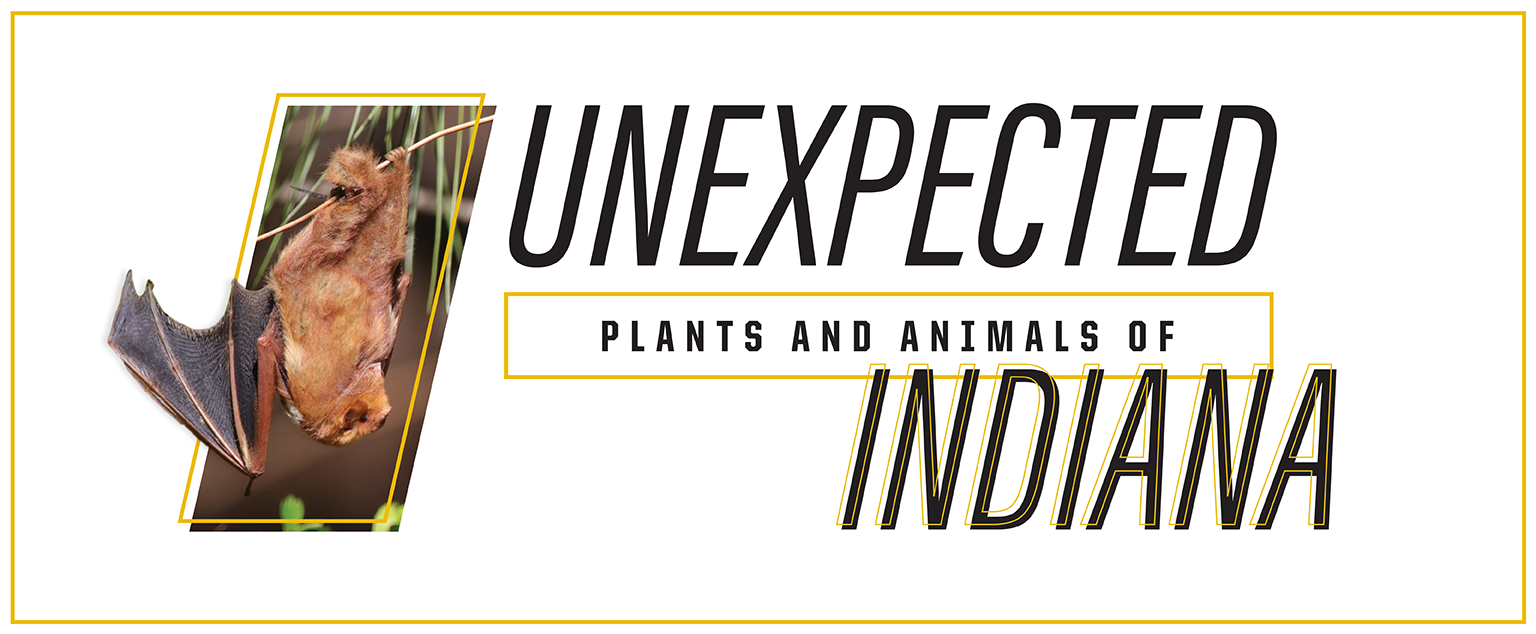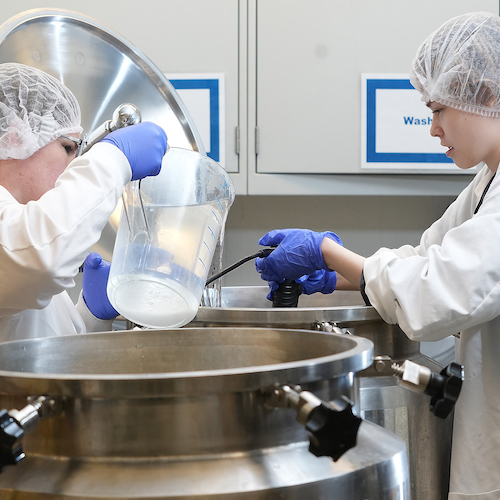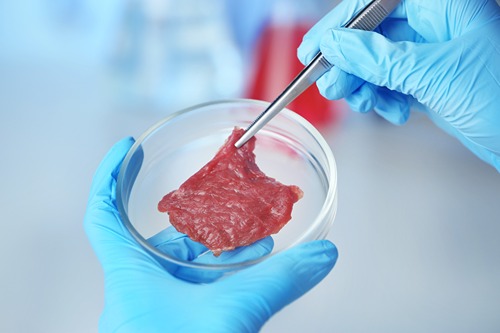 Indiana is home to a large variety of plant and animal life, supported by the range of Indiana habitats, from its prairies to verdant hardwood forests. Discover some of the state’s more surprising species with Purdue Agriculture’s Unexpected Plants and Animals of Indiana series.
Indiana is home to a large variety of plant and animal life, supported by the range of Indiana habitats, from its prairies to verdant hardwood forests. Discover some of the state’s more surprising species with Purdue Agriculture’s Unexpected Plants and Animals of Indiana series. The baby bat Screamed out in fright, “Turn on the dark, I’m afraid of the light.”
- Batty by Shel Silverstein
Contrary to the poem by children’s author Shel Silverstein and commonly-made associations of bats with darkness, it may be surprising to hear Eastern red bats are drawn to the light.
Red bats are insectivorous and begin their hunts at dusk. Streetlamps attract high concentrations of insects at night and invite feeding bats. As cities developed, the bats adapted their behavior and now stay near sources of light to catch prey.
Though they do not hunt in complete darkness, red bats still rely on echolocation. “Echolocation is an amazing process to contemplate,” expressed Patrick Zollner, professor of quantitative ecology.
During echolocation, bats make noise at a frequency higher than humans can hear. “To detect it, we bring specialized devices into the field that record their sound and bring it down to a level we can hear.”
High-frequency sounds cannot travel far due to physics. Bat species echolocate at different frequency ranges depending on how far they need to detect.
“Bats like northern long-eared bats hunt right in the midst of the forest and need a high frequency range to get a detailed picture of all the nearby obstructions. High-flying bats like red bats have less in their way and can afford to use low-frequency sounds to perceive things further out.”
With the noises inaudible to humans, it may be surprising to hear they are incredibly loud. “For bats, it’s the equivalent of taking a fire alarm, holding it next to your ear, and pressing it,” Zollner explained.
To prevent deafening themselves, bats disconnect the bones in their inner ear before they make noise. “When the sounds return, they put their inner ear back together. It happens at the scale of milliseconds.”
Another misconception about bats is that almost all live in caves. “Broadly speaking, we have two groups of bats in Indiana,” Zollner noted. “Bats that hibernate in caves and bats that are migratory.”
Red bats are found in many forested areas in the eastern United States. Depending on the season and stage of their migration, they can be found as far north as Canada or as far south as Argentina.
“Even though some mammals can glide, bats are the only mammal that truly flies.” To make long flights, migratory bats have specialized bodies.
Bats’ wings are essentially large hands. The bones connecting the wings’ thin membranes of skin are actually fingers. Like human hands, bat wings have four fingers and a thumb. Flying straight, red bats can reach 40 miles per hour.
Bats also have short digestive tracts, about a third the length of similar small rodents. Most chew food thoroughly, helping it pass through their system in around 30 minutes. This helps minimize the weight they need to carry in flight.
Eastern red bats are even known to mate during flight. Copulation can begin mid-air before they fall to the ground.
Although the sky can help red bats find food, partners and a path to warmer weather, it can also lead to danger.
“Migratory bats are having many issues with wind turbines,” shared Zollner. “Especially this time of year when there is a lot of energy demanded. The vast majority of the mortality for those migratory species come from them.”
Estimates attribute hundreds of thousands of bats’ deaths to wind turbines in the United States annually. With wind-generated energy increasing in the country, migratory bats’ populations are projected to decline.
Research is currently underway to find solutions that will simultaneously continue developing sustainable renewable energy and protect the bats through adjustments to the turbines and their operating procedures.
Bat image used in series graphic: Sarah Kelsey from www.inaturalist.org.





